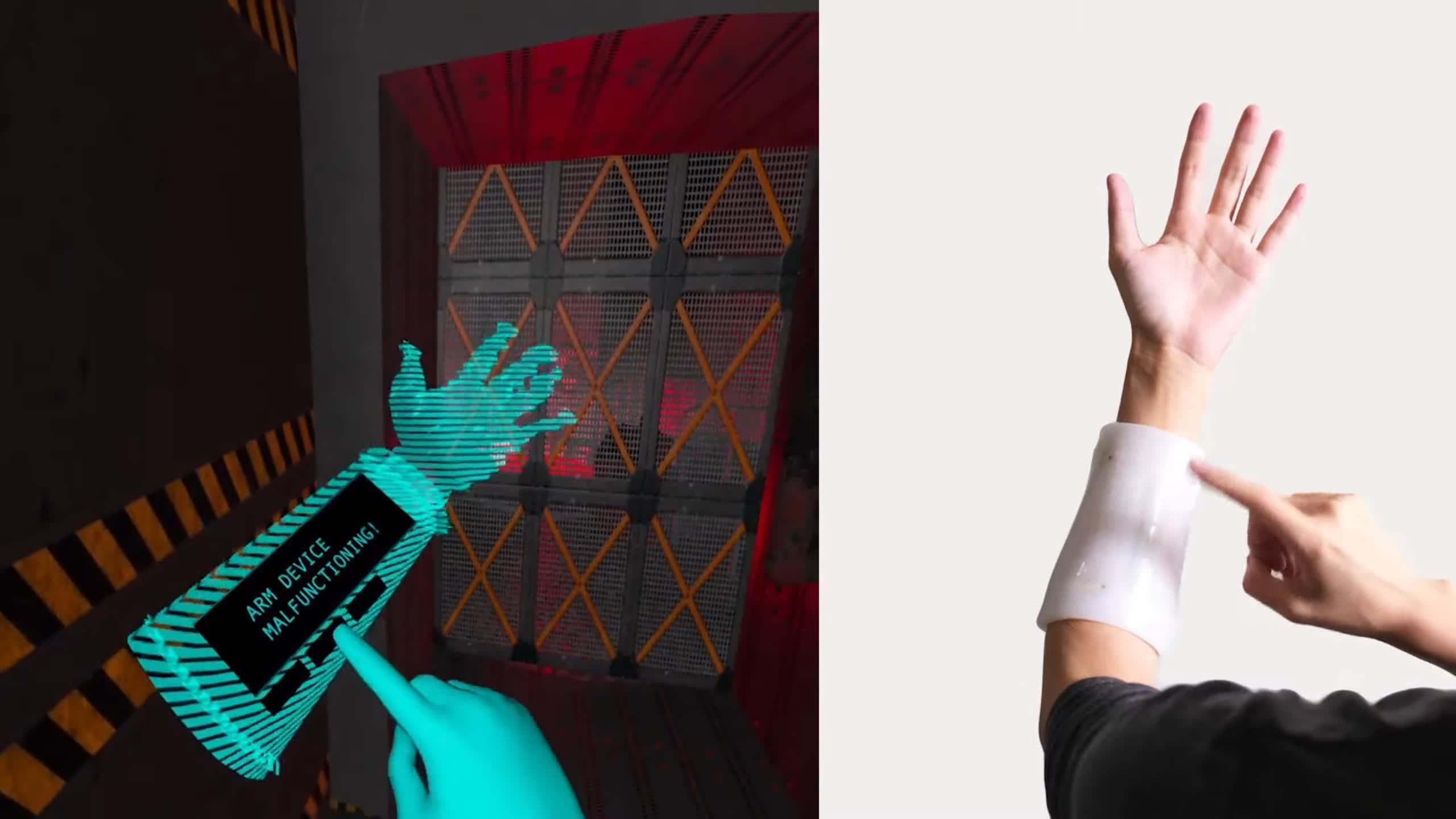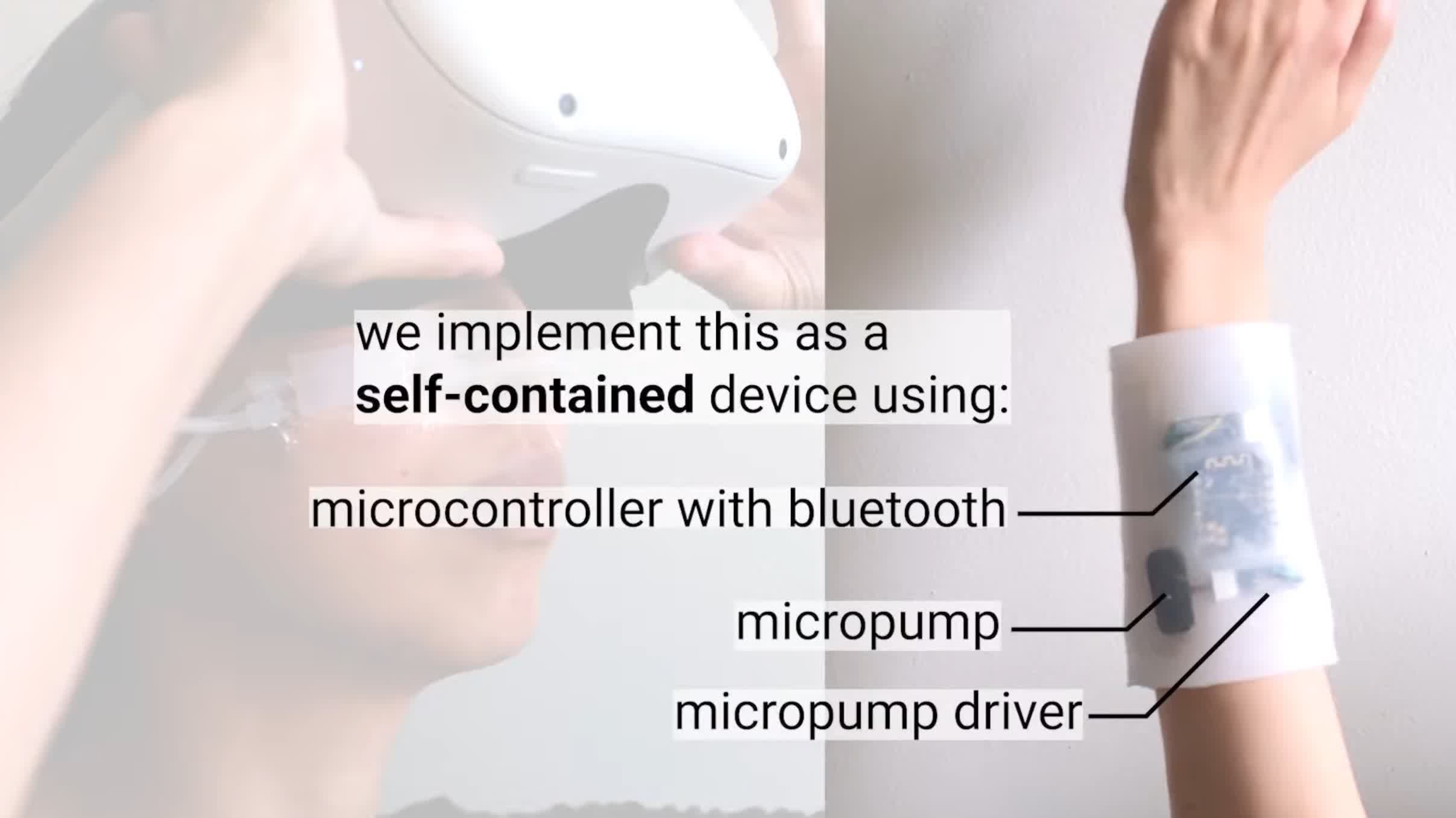WTF?! With much of the tech industry suddenly jumping on the metaverse train, we can expect more companies trying to make virtual worlds seen in the likes of Ready Player One a reality. A step toward that goal is the ability to feel the digital universe we’re inhabiting beyond just sight and sound, which is where chemical haptics come in.
Created by researchers from the Human Computer Integration Lab at the University of Chicago, chemical haptics use self-contained wearable devices to simulate sensations while in virtual reality. The wearables combine silicone patches and micropumps to deliver five different chemicals to the surface of a person's skin.

Five sensations can be produced by using the various chemicals: menthol creates a cooling effect, ideal for when walking out into a cold winter’s day in a VR game; capsaicin, often found in spicy food, replicates the sensation of heat; sanshool can make an area feel tingly; and lidocaine, a local anesthetic, can make your skin feel numb. A video shows how sanshool can simulate the feeling of a futuristic monitoring device short-circuiting while on the forearm.
While lidocaine sounds slightly concerning, it’s not quite as worrying as the last chemical: cinnamaldehyde. This will create a stinging sensation on the skin, possibly used as negative feedback when a player fails to achieve a task, or when they receive an in-game burn. It is worth remembering that all these chemicals are safe, apparently, so you’re unlikely to suffer injuries or have your skin melt off in some kind of Squid Game-like scenario. The devices certainly provide a wider range of simulations than current haptic feedback kits like the one below.
The chemical haptics device can be worn anywhere there is direct contact with the skin, such as on the cheeks for simulating hot/cold environments. You probably shouldn’t, however, stick them to your junk, but you can guarantee plenty of people will.
https://www.techspot.com/news/92200-wearable-devices-you-feel-cold-heat-pain-vr.html
